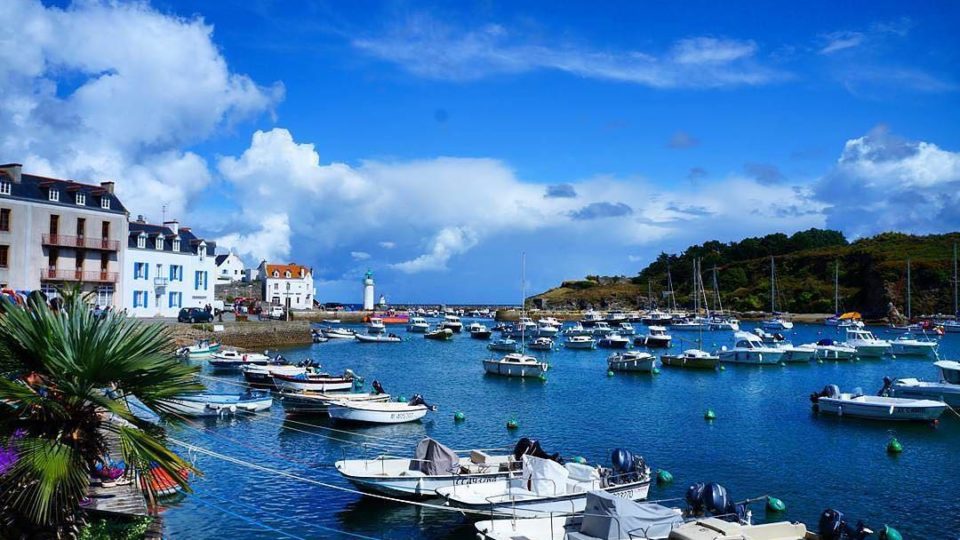Belle-Ile-en-Mer, France
In this article, we are dedicating our newsletter to Belle-Ile (also known as Belle–Île, Belle–Île-en-Mer, or Belle Isle), a charming island with a well-suited name. Located about nine miles offshore from the peninsula of Quiberon, it is Brittany’s largest island, well-known to amateur sailors. It has many pleasant surprises in store for those who make the effort to visit it. An unforgettable walk awaits you, through the small port lined with the colorful façades of the houses, along the wild coast with the wind-sculpted jagged outline, and on to the imposing citadel.
>>Visiting Belle-île: Brittany’s Largest Island Guide
Here Is Some Information About Belle Ile
Such a Peaceful Island
Several thousand years ago, the ocean level was much lower than it is today. About 9,000 years ago, at the end of the last glacial period, the climate turned considerably milder, causing the waters to rise and flood the southern Armorican shore. The completely sunken land left behind a 9 mile wide sound, which today separates four islands from the continent. These islands, first inhabited by the Gaul Veneti tribe, later became Groix, Houat, Hoëdic, and Belle-Ile. The latter one is much larger than its neighboring cousins, at 11 miles long by almost 6 miles wide, and emerges 165 ft above sea level.
This island was very prized as soon as it was discovered for its abundance of soft water, considered a real treasure back then. This exceptional natural resource, along with the richness of the land and the proximity of the continent, made Belle-Ile the prey of invaders from all parts of the world. It is hard for the amateur sailors who come to cast anchor at the foot of the imposing citadel’s ramparts, or the vacationers who come to stroll the quiet small streets, to imagine that over the centuries, this peaceful, charming island was the setting for fierce and merciless fighting that spared it no suffering.
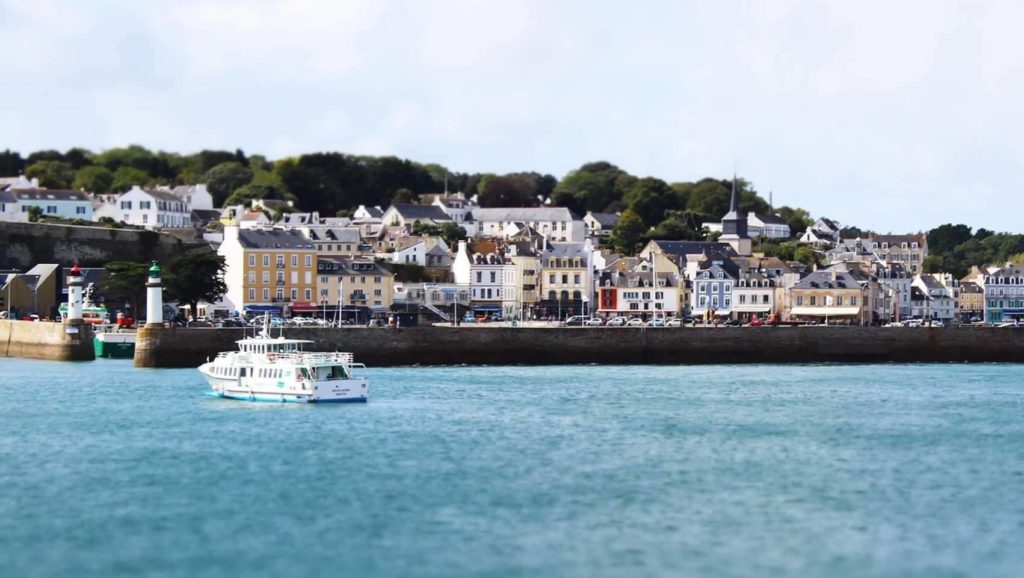
Run for Your Life!
The Romans took over the island in 56 BC and settled there for 400 years. The Saxons, who evicted them in the 3rd century, were then followed by the Armoricans and the Bretons, who came from Great-Britain in the early 5th century. Another century later, the Franks invaded it. The Normans came between 905 and 910, and pillaged and sacked Belle-Ile, then known as Vindilis.
The island’s strategic position made it both very attractive and easy to appropriate since it was poorly protected. It had to defend itself continuously, without respite, while it also had to bury its dead and rebuild after each successive destructive attack. And then there was its soft water, a resource that quickly became a source of problems. Sea traffic was heavy, and many sailing boats were moving about near the island. The maneuvers on these ships employed many men who needed to be fed and provided with drinking water. Sadly, whether they were English, Spanish, or Dutch, these sailors often behaved boorishly and without a word of thanks. Over these turbulent centuries, the island’s inhabitants were also haunted day and night by yet another curse: Pirates.
In 1454, in response to their endless acts of violence, Pope Nicolas V decreed that all these vandals would be excommunicated. Unfortunately, the threat did not affect these men in the least since they did not fear the fires of Hell. In1536, King François I, despite being a very courageous man himself, admitted he was powerless in the face of these invasions and simply ordered that the island be evacuated anytime they should occur.
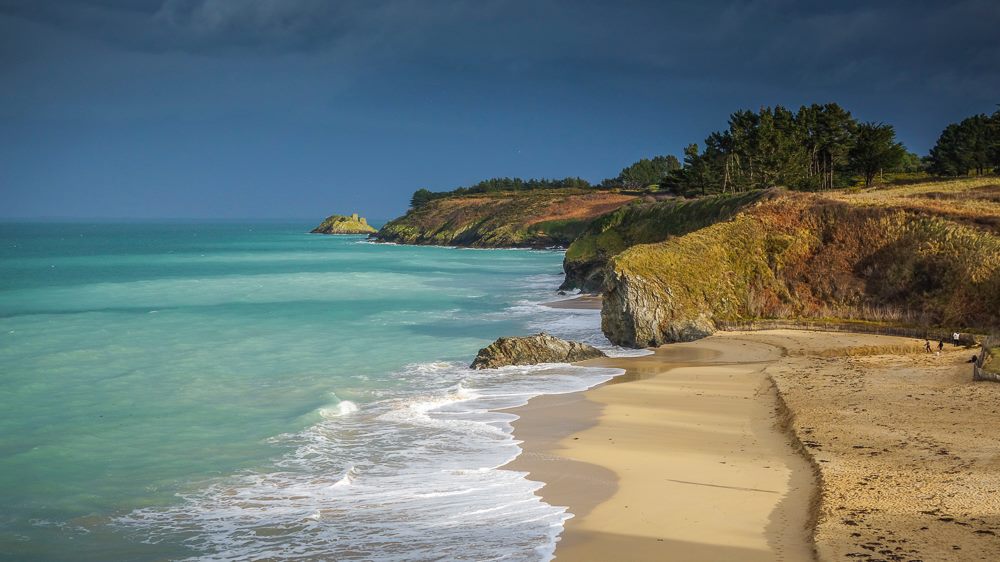
A Better Life
The dukes of Brittany succeeded one another without ever gaining total control of this island. Indeed, once placed under papal authority, it belonged to the Benedictine monks. Settled there ever since the 11th century, they had built a modestly sized fort, brought wealth to the island, and defended it the best they could. However, as time passed, they were less and less able to keep up their defense of the area. While his father François I had chosen to give up, Henri II did the opposite and chose to take control, by fighting the enemy. He built a small square fort in 1549, and within a few years, appointed a captain in charge of defending the fortification along with 120 men.
A quarter of a century later, Charles IX, once more reducing the power of the monks, turned the site over to his childhood friend, the Marquis Albert de Gondi, to ensure the island’s protection. Under the Gondi family, the inhabitant’s situation greatly improved. Privileges granted them under the reign of François I, such as the royal tax exemption, were extended to help them overcome adversity. Many families of craftsmen, fishermen, and farmers came to settle there. They were even given arms to participate in the defense of the island. They also contributed to that goal by building the donjon and the ramparts that surround the castle.
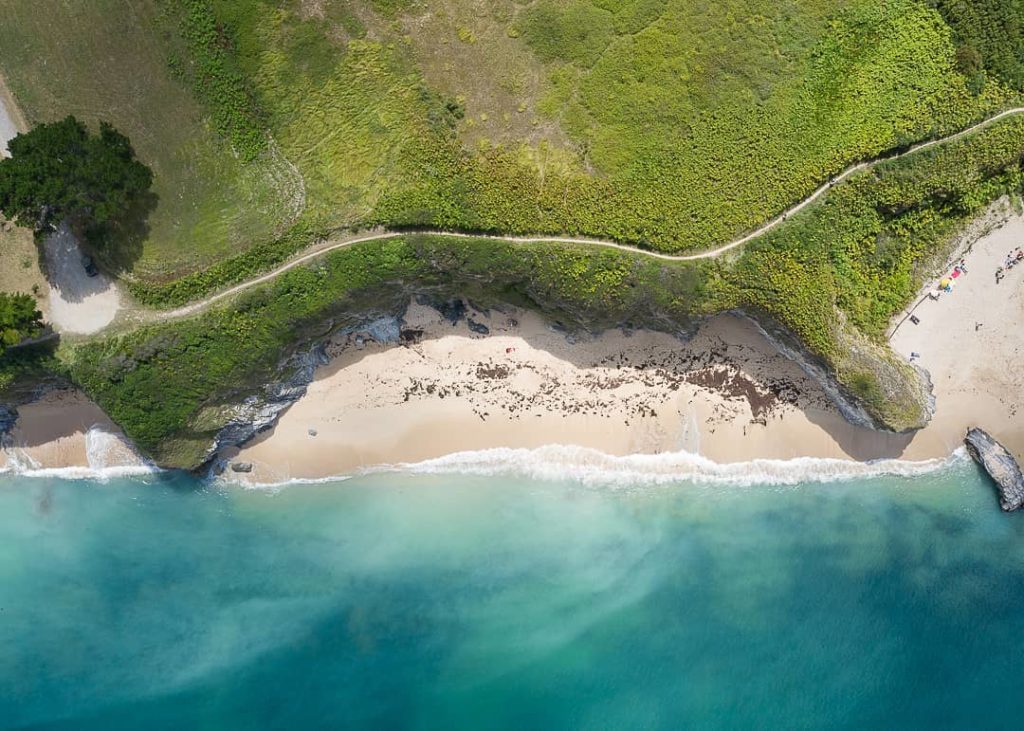
A Troublesome Cousin
Henri was the third Marquis of Gondi. He lived in Paris but was responsible for Belle-Ile. Also, he was particularly fond of the island and visited it often. He led the high life in the palace and threw lavish parties. Worried about staying in the king’s good graces, he was embarrassed by his relation to Cardinal de Retz, his cousin, who was the all-powerful Cardinal Mazarin’s sworn enemy.
The latter had Cardinal de Retz arrested and imprisoned, first in the Castle of Vincennes, then in the Castle of Nantes. With the help of an accomplice who was waiting for him with a horse, the prisoner managed to escape and ran away at full gallop. But in his mad rush towards freedom, he fell and fractured his shoulder. Wounded, he arrived as best he could on the island and begged his dear cousin to offer him refuge. Although ill-at-ease, the marquis could nonetheless not find it within himself to chase away the fugitive.
It would have been imprudent to welcome him to the castle, so he was hidden away in the nearby presbytery of Bangor. But the convalescent soon had to run away again as Mazarin caught wind of his hiding place. He then discretely boarded a fisherman’s rowboat headed for Spain to deliver sardines. Legend has it that once he arrived in Basque Country, the fishermen took pity on the poor cardinal, and slipped him a few coins after they sold their fish. By order of the king, Henri of Gondi was forced to sell his island to the Minister of Finances, Nicolas Fouquet, who thereby became the fifth marquis of Belle-Ile.
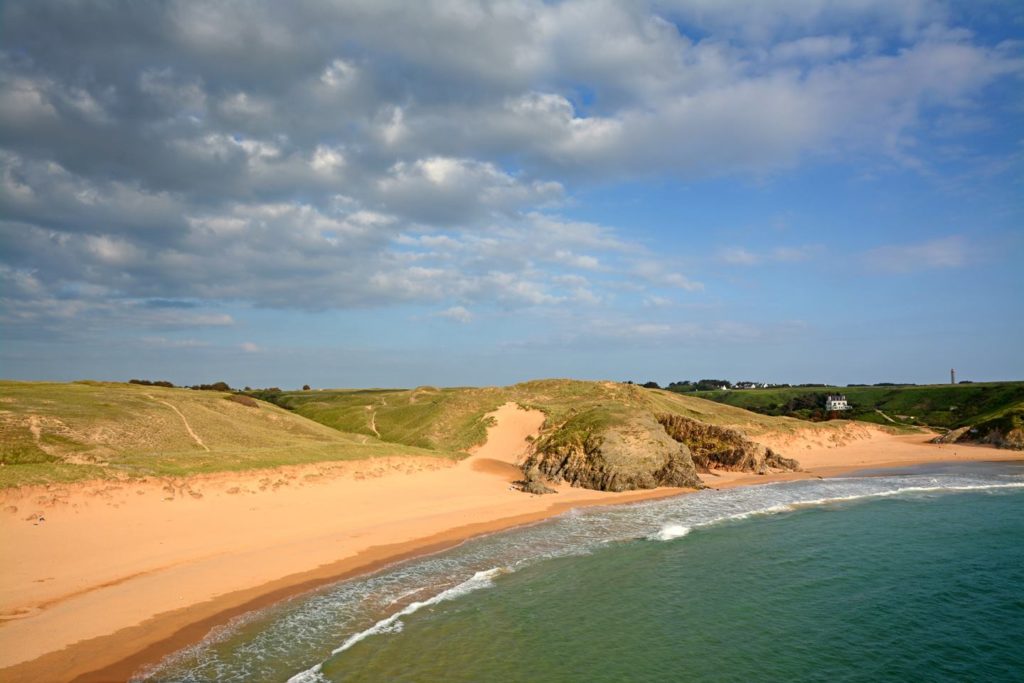
A “Crime against State Security”
Nicolas Fouquet became the Superintendent of Finances under Louis XIV, in February 1653. He was a very powerful figure in the king’s court, and also a very wealthy one. That same year, he purchased the small castle of Vaux-le-Vicomte. He invested great sums in transforming his estate into the greatest castle and garden in France, a task for which he hired the famous architects le Vau, le Brun (interior), and le Nôtre (landscape). He wasn’t pleased when the king ordered him to go into debt to improve the port of Belle-Ile, which he cared little about.
However, it wasn’t long before he realized what a strategic position the island offered and the profit he stood to make from a successful maritime commerce with the Americas. He cleverly tackled the job, developed the port and carried on the work on the fort. All this didn’t keep him from living it up at Vaux-le-Vicomte, where he entertained a small circle of famous artists that included Molière, La Fontaine, and Madame de Sévigné. He hosted delightful parties, but the one he gave on August 17, 1661, however, would prove fatal. He held such a sumptuous reception for the Sun King that the monarch was offended by it.
Already a much-envied man, Fouquet now found himself a suspect with the king as his formidable enemy. His fate was sealed, and his disgrace inevitable. Under the pretext that he had undertaken the work on Belle-Ile not to defend the area but rather to ensure his own refuge in case of need, he was arrested and condemned for committing a “crime against State Security”. Nicolas Fouquet was Marquis of Belle-Ile for three years without ever having set a foot there!
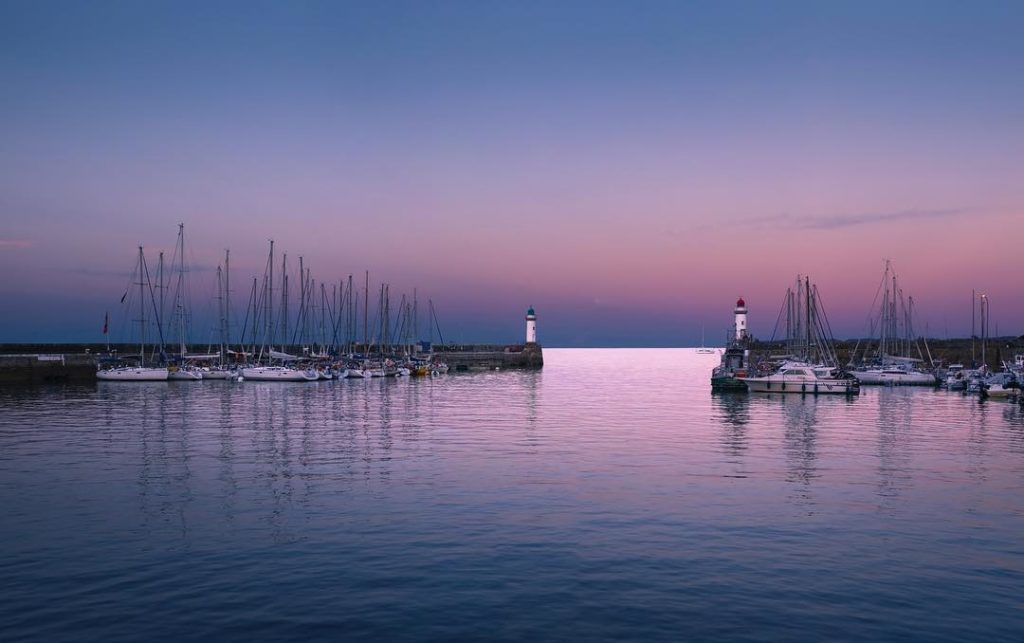
Sharing the Land
Thousands of miles away from Belle-Ile, in North America, lived the Acadians, men, and women who remained very much attached to their French roots. In 1763, a new armed conflict between England and France erupted. The French were defeated and forced to hand over most of their American colonies as well as their trading posts in India. The Acadians, who had never ceased to pledge their loyalty to the king of France, were purely and simply evicted from a land they had been living on for over two centuries.
For its part, after two years of English invasions, Belle-Ile was devastated and needed a workforce to rebuild. It offered to take in some of its American cousins, and 78 Acadian families landed there in June 1766. They were given a few acres of land, some tools, some animals, and some building materials to construct their houses, in exchange for which they committed to cultivate their land for at least ten years. With only a few complaints, this integration went smoothly since it was in everyone’s best interest, Acadians and locals alike, and they did share a common religion and a common language. It wasn’t very long before these newly arrived families blended perfectly into the island’s population. Today, all the Le Blancs, Grangers, Richards, Landrys, and Mausers from the US or Canada know they have cousins on Belle-Isle!
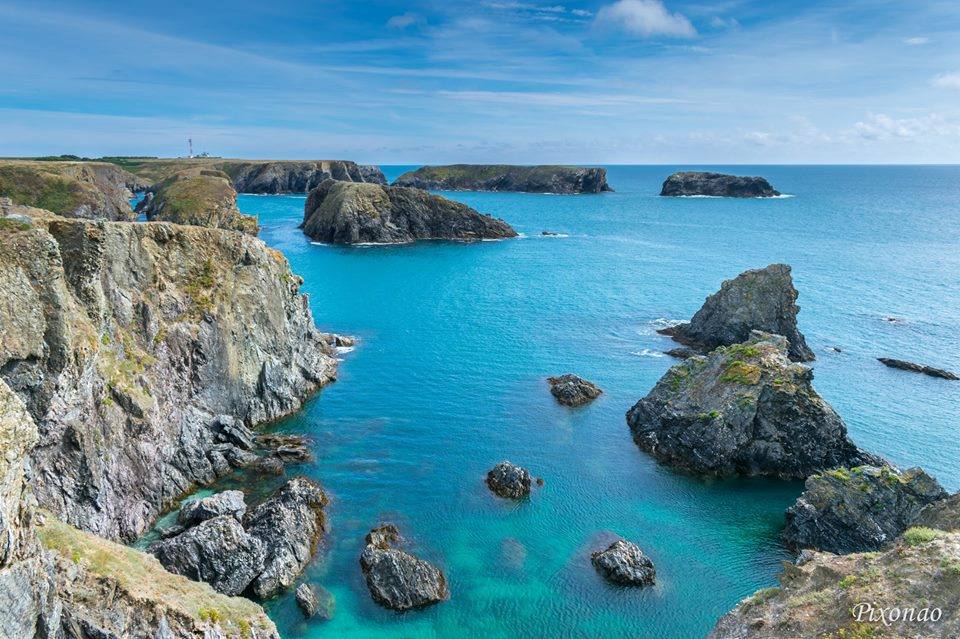
Belle Epoque Paparazzi
In the summer of 1894, the very famous actress Sarah Bernhardt came to spend the day on Belle-Ile with her friends. While strolling along the beautiful wild coast, she discovered at the Pointe des Poulains (“Colts’ Point”), a medieval-looking residence that was a small military fort of the Second Empire. It was love at first sight, and she decided to buy it, though her friends assumed it was just another one of her whims. Sarah Bernhardt was not a beautiful woman. Her thinness and her androgynous silhouette had earned her a few jibes in the past, but her huge talent had made her a world-renown dramatic actress.
Her friends knew her to be a colorful, unpredictable, and eccentric character, perfectly capable of acquiring a residence without a thought. For her part, the actress saw this very romantic place as the ideal spot to receive her friends and get away from the potential deprivation of life as an artist. Sarah Bernhardt was also a modern woman who liked to use the newspapers of the day to maintain her image. And so for almost 30 years, every summer, she came to seek refuge on this island at the end of the world, followed by a group of friends, admirers but paparazzi as well. Behind all the glamour and glitter, Sarah Bernhardt was also a sensitive woman. She took advantage of her fame to alert the press any time the population of Belle-Ile needed help.
Why You Should Visit Belle-Ile
The small fort was unfortunately destroyed by the Germans at the end of the war, but the jagged coast is still as beautiful as ever, and the fishermen of Belle-Ile keep the memory of their benefactress alive. Before the famous actress, another artist had been captivated by the area, Claude Monet. Indeed, in 1886, the painter came to the island with his brushes to immortalize this quite rightly labeled “wild” coast.
Apparently, he remained in an angry mood during his entire two months stay, as the weather just wouldn’t let up. Gusts of wind, rain, and storms were a quasi-daily pattern. He had to ask the island’s resident handyman, Hyppolite Guillaume, to hold his easel down while he painted. And evidently, he fell under the charm of the place. He didn’t give up, despite the dreadful meteorological conditions, and went on to produce about 40 paintings, including the portrait of his assistant, the now very famous portrait of Poly.
Still today, it is impossible to resist the distinctive charm of Belle-Ile. Do not hesitate, should you find yourself in this region, to board one of the boats that shuttle back and forth between Quiberon and Belle-Ile, and set out to discover this most picturesque of islands. As for us, we already plan on returning to Belle-Ile, because we must tell you the history of the Vauban citadel, the island’s symbolic site.
